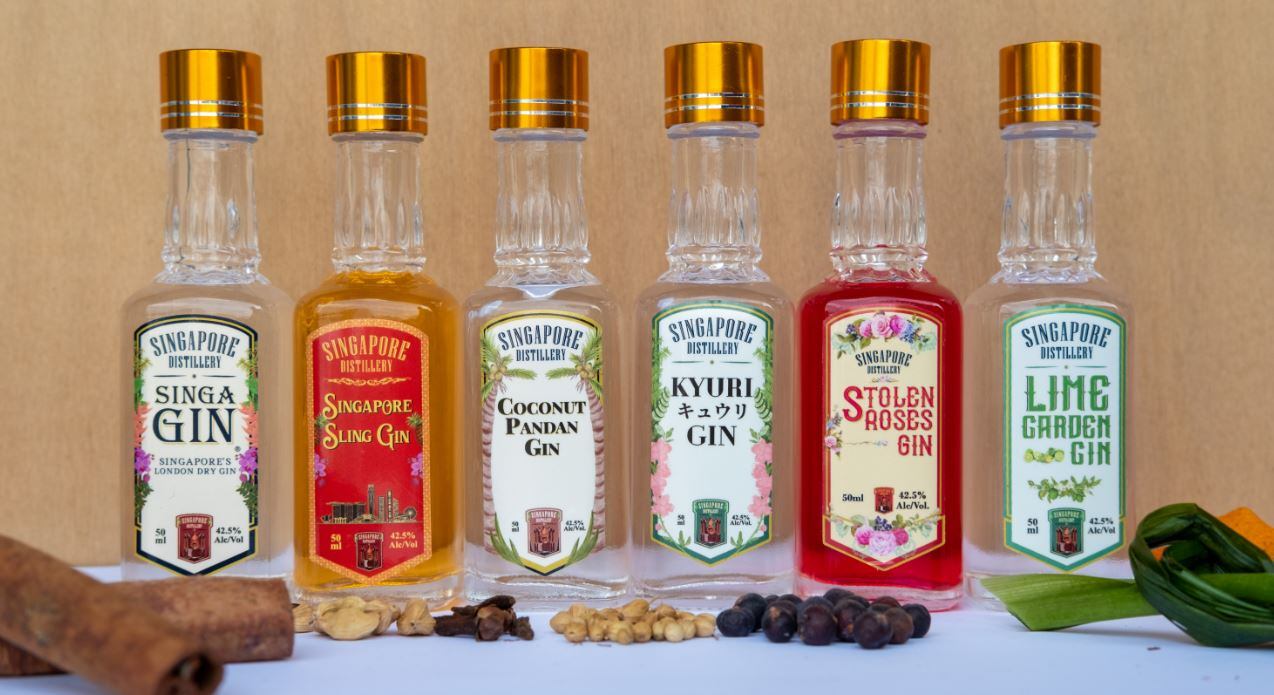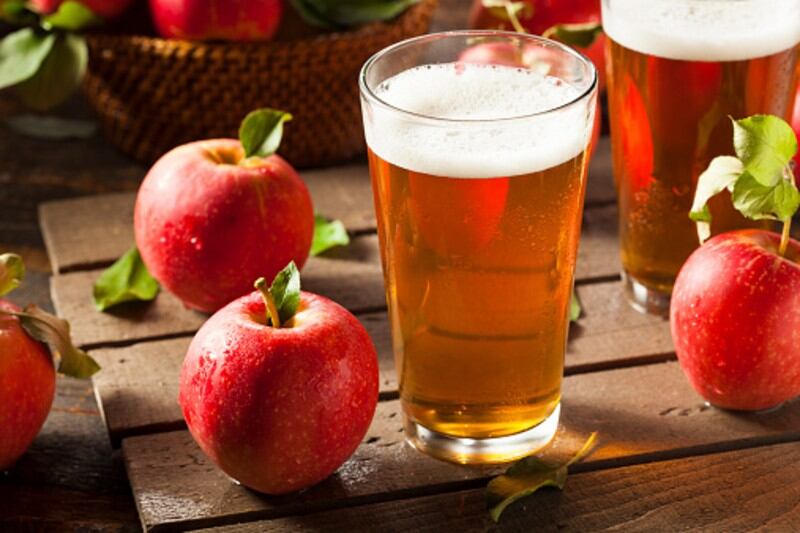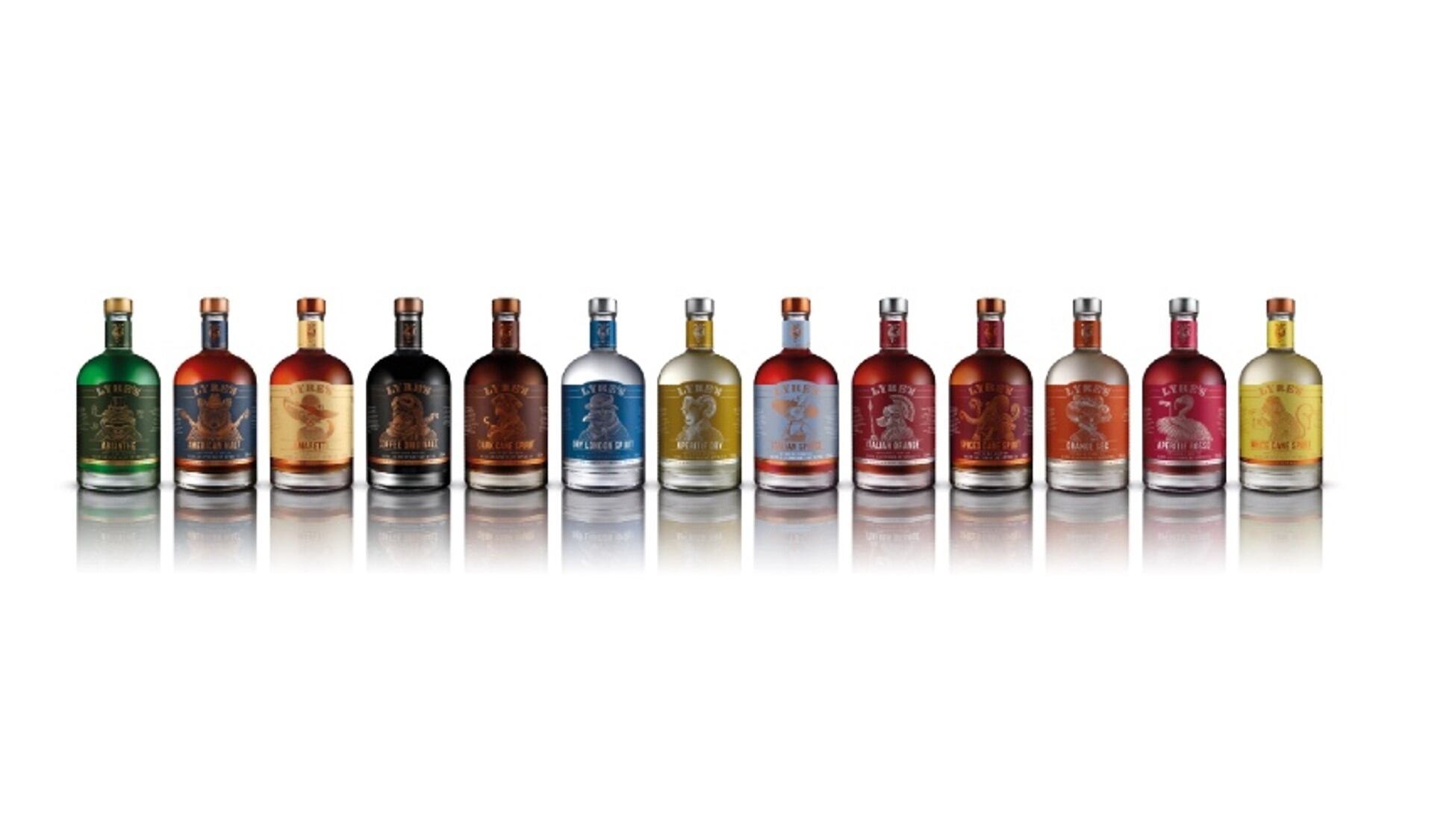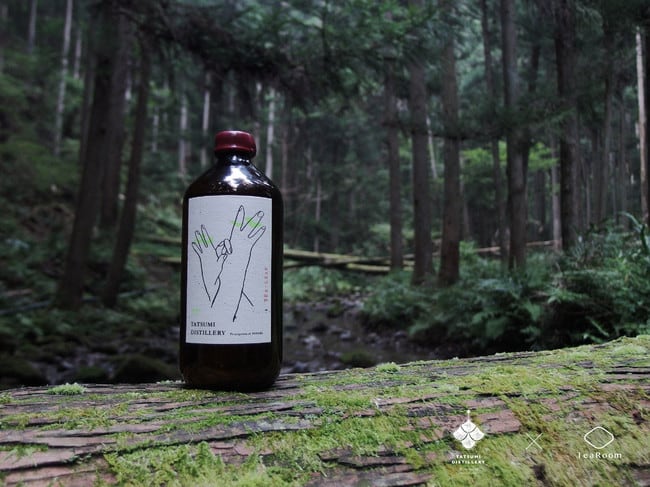The company has released six SKUs, Singa Gin (classic London Dry Gin with 13 herbs and spices such as juniper, mandarin orange, cinnamon, Sarawak pepper), coconut pandan, lime garden, Singapore Sling, stolen roses, and Kyuri (Japanese cucumber and sakura).
These were initially soft launched end July on Singapore Distillery’s website, but is now available on e-commerce platforms Shopee and Lazada, as well as bars and restaurants in Singapore.
According to the firm’s head distiller Ashwin Sekaran, gin consumption has gone up over the last few years in Singapore.
“You see people around you starting to drink gin as opposed to other spirits, more gin bars opening up, and how negroni is a popular drink.”
According to Sekaran, the inspiration to create craft gin stemmed from a trip to London three years ago.
“We found that many craft gins in UK were using ‘exotic’ ingredients like cardamom and cinnamon, which we already have in South East Asia, so we thought why not make use of it.”
Back then, Sekaran said there were no local craft gin companies in Singapore, so he and his team of four spent three years working on formulation before officially releasing its first gin products in October.
Sekaran said craft gins are not to be confused with flavoured gins, the latter is essentially adding flavours into a base gin recipe.
He said his craft gins have their own recipes and distillation process, “each one is its own gin, as opposed to just a flavoured gin.”
“Singapore has always been a melting pot of different cultures, each with their own cuisines, and we thought these unique flavours and ingredients would be perfect for incorporating into gins and other spirits.”
Sekaran hopes to attract gin consumers, as well as people who “want to try something new in terms of spirits”
“My gins are more than just a novelty, it’s something you can drink every day.”
Singapore Distillery sources its Asian botanicals from local suppliers in Singapore, except Juniper which is obtained from Eastern Europe.
Unique manufacturing process
Alongside its product innovation, the firm also focused on optimising its distillation process.
Watch Sekaran explain more…
Sekaran explained the firm has a unique manufacturing process: “Our still is made up of a 500 L copper pot still, two columns and two vapour baskets.
“To begin, steam goes through the first vapour basket, which extracts a layer of flavour. It then goes through a column which helps to refine the flavour. After this, it goes to another vapour basket, where the steam is cooler, and extracts another layer of flavour.”
This process helps the firm achieve its different layers of flavours from the botanicals, and creates a lighter and more delicate flavour.
In addition, the firm is using a whisky head, instead of a gooseneck used by most gin distilleries. A whisky head can remove undesirable oils from botanicals more efficiently than a gooseneck.
The whisky head also encourages most of the distilling gin to condense in the head and fall back into the pot in a process known as reflux.
The more reflux there is, the lighter and more complex the spirit will be, as the gin is filtering out the heavier oils, which contributes to undesirable taste.
“I think this makes our gin quite unique and balanced, because there are various processes that the steam has to go through before it's made to gin,” Sekaran said.
Copper as a material also helps to strip away sulphuric compounds during distillation, which removes unwanted flavours and smells from the final gin.
Since establishing the company three years ago, Sekaran said its biggest challenges was achieving consistency within batches.
For instance, its signature Singa gin took about 100 batches of testing.
“It takes a long time because we let the gin rest for a few weeks for its flavours to stabilise before we test it. From there, we make the necessary adjustments not only to the formulation, but also the distillation process.
“It comes down to making a lot of notes and being very strict with the process and tasting.”
Vodka and future plans
The company has received some interest from Australia, Malaysia, US and Eastern Europe for its craft gins, and is currently exploring distribution overseas.
However, Sekaran said the firm was not in a rush to enter new markets: “We will only accept if the deal is good. Instead, we are using this time to refine the process of making gins so that we can be more efficient.”
Singapore Distillery also recently soft launched its first vodka product, the Merlion vodka on its website, Shopee and Lazada.
According to Sekaran, the vodka was distilled five times to create a clean taste, but with a slight grainy flavour.
“Through this soft launch, it gives us time to build up some stock, and also hear feedback from customers on this product.”
Sekaran is also working on two gins currently in the prototype stage, and hoping to launch a pineapple vodka at the end of this year.
“I intend to keep experimenting and finding what works and expanding beyond vodkas and gins.”




